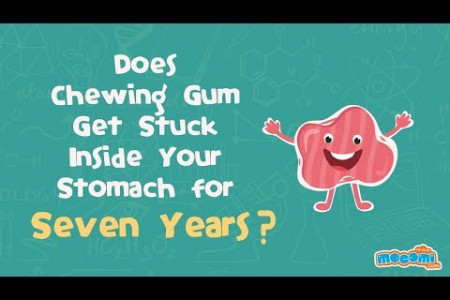
Human Digestive System
HUMAN DIGESTIVE SYSTEM Ever wondered how your body deals with food? Ever wanted to know what happens between the first bite and the number two? You are about to find out... DIGESTION: the way your body turns food into energy and byproducts (excrement). TONGUE WHEN DOES THE DIGESTION PROCESS START?? SALIVA GLANDS Digestion can start well before food reaches your mouth. Saliva production, the first step in digestion, can be activated by smells, sights, or even thoughts. gland is the substance produced in the saliva SALIVA: PHARYNX mouths of humans and most animals, contains 98% water and 2% ESOPHAGUS enzymes, electrolytes, antibacterial compounds, etc. LIVER Around .5 to 1.5 liters of saliva is produced in your mouth a day. STOMACH PANCREAS Eww Saliva stones can form in the saliva glands, causing a great GALLBADDER deal of mouth pain. DUODENUM MOUTH/TONGUE: While saliva gets the food ready, JEJUNUM the mouth begins the first of SMALL INTESTINE many steps of separation. Your tongue, along with tasting the food, mixes saliva with your food while chewing. It is the first stage of mechanical separation. This along with the lubrication from saliva assists getting the food down to your ILEUM LARGE INTESTINE stomach. COLON Like fingerprints, the imprint of the tongue is unique to the RECTUM individual. ANUS The tongue is one of the strongest and most flexible muscles for its size as well as being the fastest healing. PHARYNX & ESOPHAGUS: The pharynx is your CAN YOU SWALLOW FOOD UPSIDE DOWN? throat, which receives the food that has been chewed. The food is sent to your Yes, you can through your body's autonomic peristalsis response. How did you think Spiderman eats his lunch?! stomach via peristalsis. This is a type of wave muscle contraction similar to how worms propel themselves. STOMACH THE BOLUS! THE PANCREAS: In addition to insulin regulation, the Once the chewed food (bolus) reaches the stomach, gastric acid goes to work breaking everything down. So the stomach separates food both mechanically (stomach churning) and chemically (gastric acid). The slurry of food, called chime (yummy!), is released through the pyloric valve into the duodenum (the beginning of the small intestine). pancreas also produces enzymes that reak down carbohydrates, fats, and proteins. The acid in the stomach is strong enough to dissolve razor blades. Hell yeah! Don't eat any blades though to check. THE LIVER: GALLBLADDER: Bile produced by the liver is then stored in the gallbladder and released into the duodenum in varying concentrations, depending upon the foods eaten. While the liver performs over 500 functions, for digestion, a primary function is the creation of bile, which assists in dissolving fats. The largest gallstone ever removed from someone was in 1952, Eww removed from an 80 year old woman and weighed over 13.84 lbs. THE INTESTINE DUODENUM: Before the journey to the small intestines is LARGE INTESTINE: At this stage in the digestion process, food is no longer being broken down. By the time your meal has reached this point, it is mostly water, plant fiber, electrolytes, and some dead cells from the lining of the intestinal tract. The large intestine absorbs remaining water along with vitamins produced by colonic bacteria, then compacting and segmenting the waste pushing toward the colon and rectum. The large intestine has 3 main parts: the cecum, colon, on the way, chyme is mixed in the duodenum with a final mix of enzymes to make the absorption of proteins, fats, and carbohydrates. Approximately 80% of type 2 diabetic patients who underwent gastric and rectum. bypass (which bypasses the duodenum) were cured of their diabetes. COLON CECUM RECTUM SMALL INTESTINE: This part of the digestion mechanism is the part that absorbs nutrients from the food. The average small intestine is approximately 22.5 feet in men and 23.33 feet in women. Tapeworm lives in the intestine. The largest tapeworms can grow up to 30 feet long. JEJUNUM AND ILEUM: COLON: The lining inside these two is specially designed for absorption of proteins The colon extracts water and salt from whatever is left of your food, before it is eliminated from your body. and carbohydrates. RECTUM: ANUS: Once the walls of the rectum are The anus is the opening opposite to the mouth and functions to control expulsion of excrement as well as inhibit exposure to the environment. stretched, a signal is sent to the brain to pass the bowel movement. Eww INCOMING! A veteran of WWII had been using an unusual method of 'treating' his hemorrhoids, using an artillery shell to push the hemorrhoids back in. Yes, this happened! However on one occasion the shell got stuck 'up there'. Upon surgical removal, the physician had to call in the bomb squad to build a lead box around his bum because the shell was live. Thankfully, the shell was successfully removed and nobody was hurt (unless you count the psychological damage to the medical personnel). Talk about explosive bowel movements! Sources: www.wikipedia.org/wiki/Digestion www.wikipedia.org/wiki/Saliva The American Journal of Forensic Medicine and Pathology Bailey and Love's Short Practice of Surgery, 24th edition Infographic design: www.elance.com/s/nikolam Copyright © 2012 Advanced Physical Medicine | www.advancedphysicalmedicine.org
Human Digestive System
Source
http://www.a...raphic.phpCategory
HealthGet a Quote





